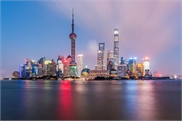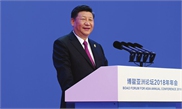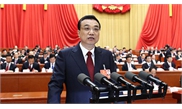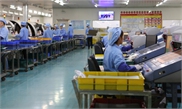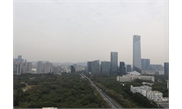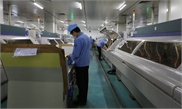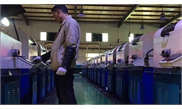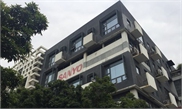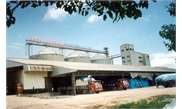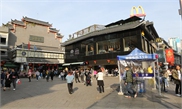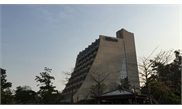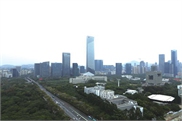China must keep momentum in energy revolution
In April 2018, the Central Committee of the Communist Party of China (CPC) and the State Council declared that a free trade zone would be established in Hainan by 2020, with a free trade port to follow by 2025.
Tencent helps Chinese youth pursue and realize their dreams
Young people have always pushed the development of society with their imagination, individual and social pursuits and innovation. The reform and opening-up, which opened the door for China to go to the outside world, also brought enormous opportunities for Chinese youth. Looking back at the past 40 years since the reform and opening-up, it is the dreams of Chinese youth that illuminates the future of China.
Pudong New Area's 28th anniversary of opening-up
April 18 marked the 28th anniversary of Pudong New Area's opening-up and development. If you want to know China's progress, you should study Shenzhen in the 1980s and Pudong in the 1990s. On April 18, 1990, the CPC Central Committee and the State Council officially announced the development and opening-up of Pudong New Area, back then just vast stretches of farmland. During its extraordinary 28-year journey, Pudong created miraculous growth and has drawn attention from all over the world.
China unveils guidelines for deepening Hainan reform, opening up
China on Saturday unveiled guidelines on supporting the southern island province of Hainan to deepen reform and opening up, with details on turning it into a pilot free trade zone and creating a "free trade port with Chinese characteristics."
China's reforms win accolades at Boao
China's 40 years of reforms and opening-up has significantly contributed to the world economy and promoted global integration, while also helping developing nations and setting an example of China's contribution to inclusive growth for the world, officials and experts said at the Boao Forum for Asia (BFA) in Boao, South China's Hainan Province.
Li pledges further opening-up for foreign firms
China will open up further to foreign investment in the telecommunications, healthcare, education, and new-energy vehicle sectors, and comprehensively open up the country's general manufacturing industry to overseas investors, Premier Li Keqiang said on Monday.
Dongguan upgrades to smart factory
In the past two years, I've traveled to Dongguan in South China's Guangdong Province three times. Each time, I was assigned to cover a different topic ranging from the replacement of workers with robots to the slowdown in local GDP due to crackdowns in various areas such as the way in which original equipment manufacturers (OEMs) operate.
Shenzhen, a rising foreign entrepreneur attraction
When Laurent Le Pen first came to Shenzhen, South China's Guangdong Province in 2007, he had to explain to his friends that he had moved to a city near the Hong Kong Special Administrative Region, as no one could pinpoint the city on the world map at that time.
Two-way opening-up in Dongguan
Dongguan, a city in South China's Guangdong Province, has been enjoying dividends of China's economic reform and opening-up. It has grown into the world's factory as a large part of products made there are shipped to the global market. Global Times reporter Chen Qingqing recently traveled to the city to see how it has been evolving during the country's opening-up period.
News Analysis: Why Dongguan will remain the world's factory, and probably the most competitive one
Factories in Dongguan are not willing to just work as OEMs, as the business model has low added value. Many of them are now building their own brands, based on those niche technologies they obtained from their foreign counterparts.
Shekou, a symbol of reform and opening-up
The Shekou Industrial Zone in Shenzhen, South China's Guangdong Province, has transformed from a desolate fishing village on the South China Sea in the 1970s to a developed area, continuously attracting people from both home and abroad to pursue their dreams over the past four decades.
Taking first step of foreign investment: Chia Tai Conti
Located in the Shekou Industrial Zone of Shenzhen, where property and financial services companies are gathered, a manufacturing company occupying 23,064 square meters stands out. That's not only because of the space it takes at such an expensive site but also because of its historic significance – the first solely foreign-funded company in the Chinese mainland.
Western fast food: curiosity to part of daily life
McDonald's, the well-known Western fast-food brand born in the US state of Illinois in 1955, entered the Chinese mainland in 1990, when people considered such food an exotic experience provided by China's reform and opening-up. The US food giant picked Shenzhen, the policy's test ground, as its launch pad.
First five-star hotel rapid changes witnesses
Situated in the Shekou Industrial Zone, Shenzhen, South China's Guangdong Province, the Shenzhen Nanhai Hotel, the first five-star hotel established in Shenzhen in 1984, has taken the pulse of the former fishing village's social and economic changes during the past several decades.
Return of talent enriches southern city
After a decade working in Silicon Valley, northern California, Xiao Jing, a Chinese scientist specializing in artificial intelligence (AI) technologies, decided to come back to China, and Shenzhen became his new home.
Youtu Lab inside Tencent to empower internet
Located in Shenzhen's high-technology park area in Nanshan district, scarf-wearing and winking penguin mascots stood outside of the headquarters of internet company Tencent Holdings, a pioneer contributing to China's internet revolution.
Huaqiangbei: more than an electronics marketplace
Shenzhen, which was an unremarkable fishing village in the1970s, has grown into a metropolis with the third-biggest GDP on the Chinese mainland thanks to the country's reform and opening-up that began in 1978. Today, the city is often considered a new Silicon Valley, as its information technology (IT) industry output accounts for nearly 20 percent of the total output of this sector in the country.
On the one hand, the rise of Huaqiangbei, an electronic marketplace located in the city's Futian district, mirrored the development of the city and its IT industry; On the other hand, Shenzhen is also the birthplace of some Chinese internet companies like Tencent Holdings, which has become most valuable company in Asia.
Global Times reporter Chen Qingqing recently traveled to Shenzhen to see how the opening-up policy has influenced this city and its technology industry. This is a three-part story.
Foreign investment buoyed by maturing business environment, legal system
China's business environment and legal system have improved over the four decades of reform and opening-up, said foreign business representatives in South China's Guangdong Province, adding that foreign companies need to continue to adapt to evolving development modes of the second-largest economy.


